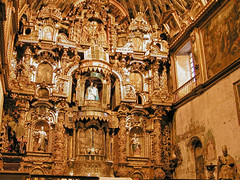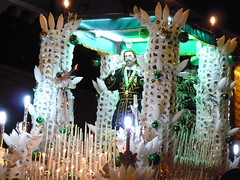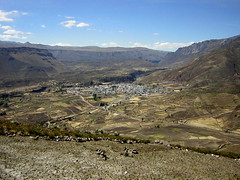Drug Lords vs. Chocolate: From Coca to Cacao in Peru [Featured]
The certificate was only one of several that emerged from the prestigious Salon du Chocolat in Paris, the annual summit of the world’s master chocolatiers. But it may be enough to start a revolution in Peru.

Cacao farmer Eduardo Gonzalez checks his plants in the jungle town of Lamas in Tarapoto, Peru Mariana Bazo / Reuters / Corbis
In October 2009, chocolate produced from the cacao beans of a small agricultural cooperative deep in one of the country’s rain forests was named the most aromatic in the world by the Salon. “We used to be known for making cocaine paste, but now we are known for chocolate,” says Elena Rios, 52, secretary of the Tocache Agroindustrial Cooperative. Rios herself gave up growing coca leaves 10 years ago, opting to take part in a program to replace her plants with cacao. “There were only 12 of us when we started; now we have hundreds. Our success is contagious. No one wants to grow coca in Tocache. Everyone is thinking about chocolate.”
Indeed, such is the local excitement that Peru’s San Martin department, where Tocache is located, wants to put itself on the map as the chocolate capital of the world. Located in the lush tropics where the Andes mountain range gives way to the northern Amazon rain forest, San Martin has a wilder reputation from its recent past: for years it was a bastion for the rebels of the Tupac Amaru Revolutionary Movement and the much more violent Maoist fighters of the Shining Path. Hand in hand with subversion came drug trafficking, with the surrounding countryside perfect terrain for coca, from which cocaine is processed.
Tags: chocolate, coca, farmers, MRTA, san martin, [Featured]










